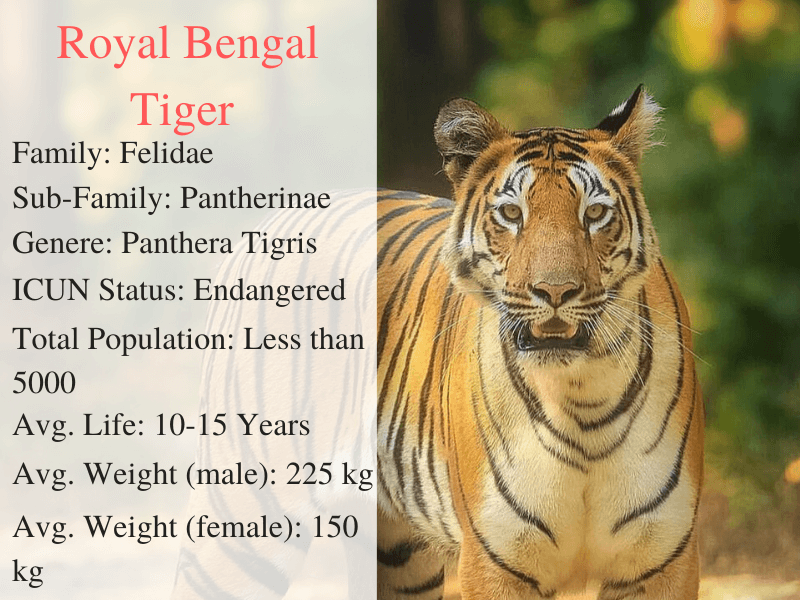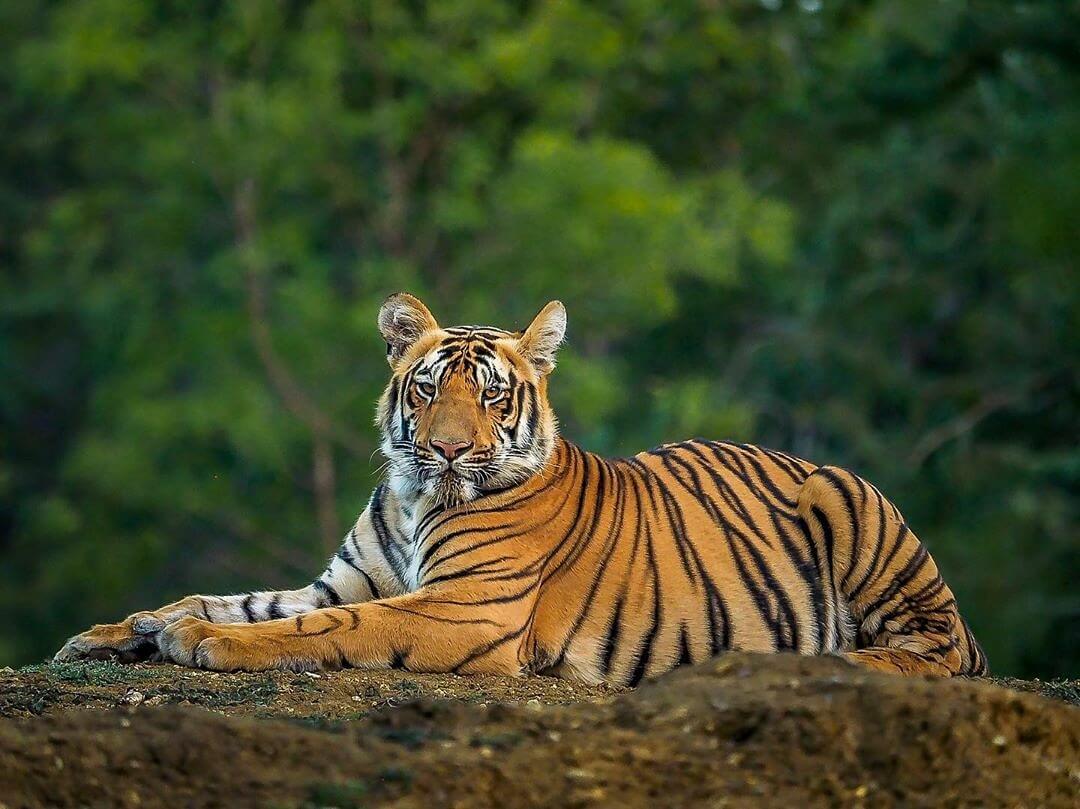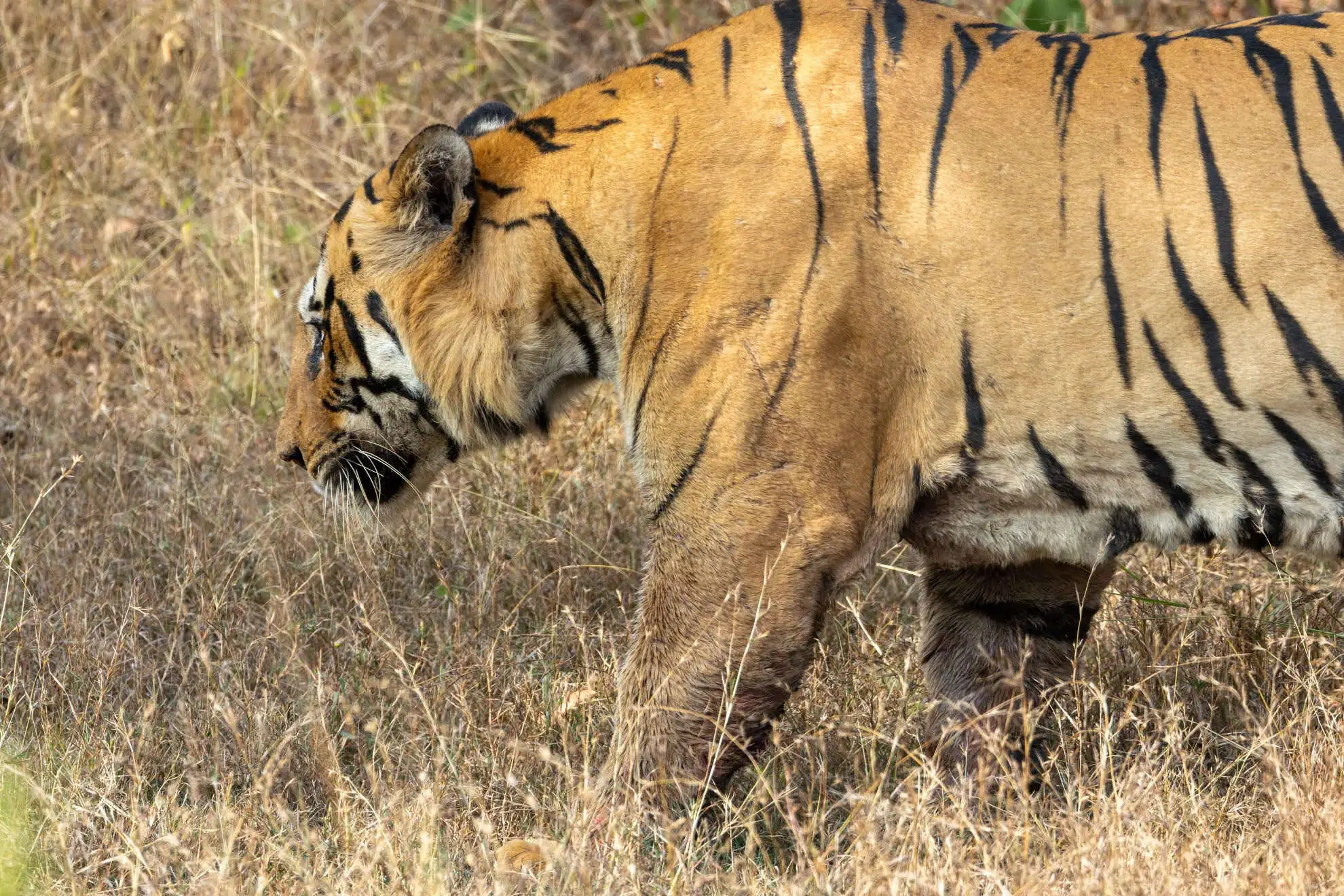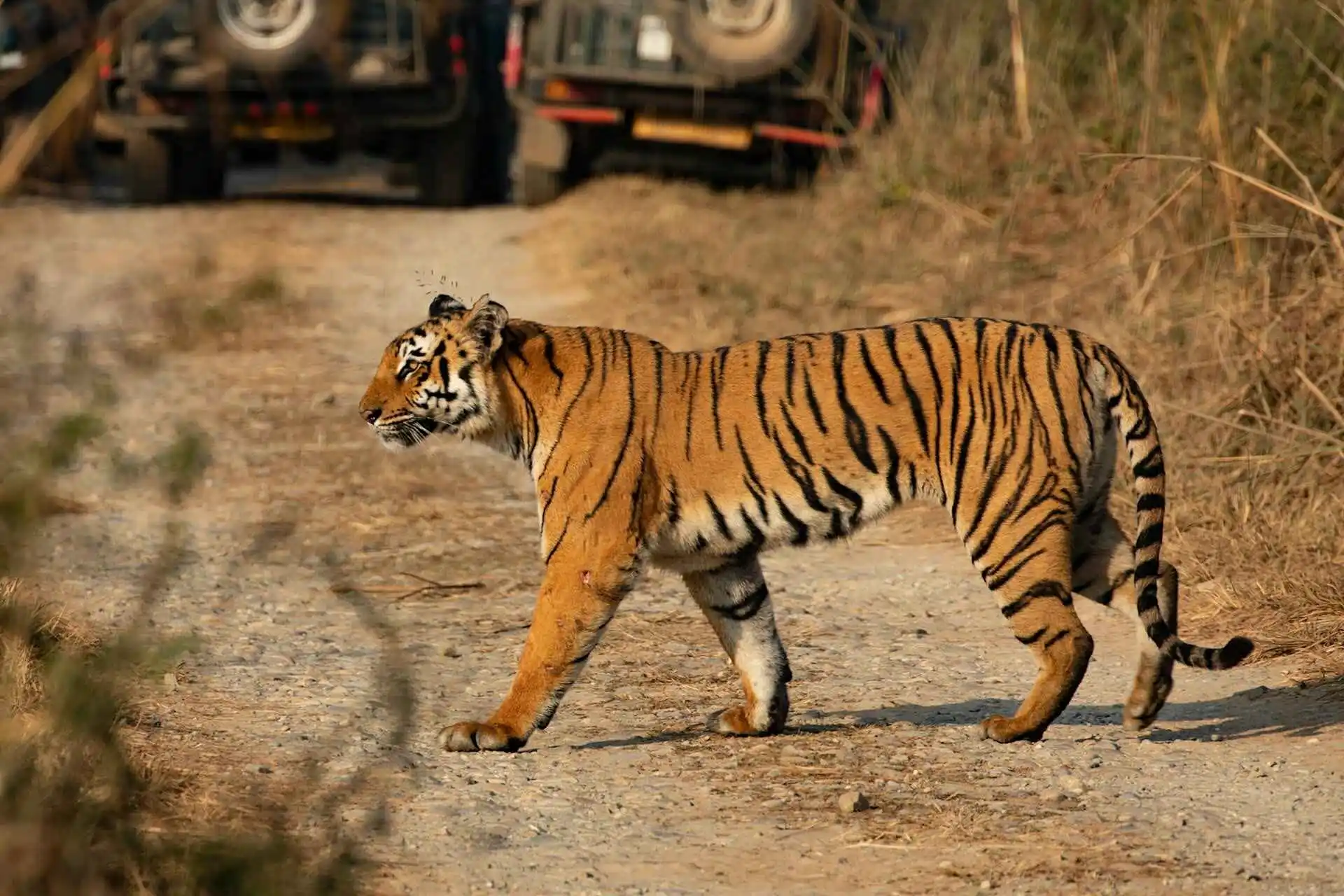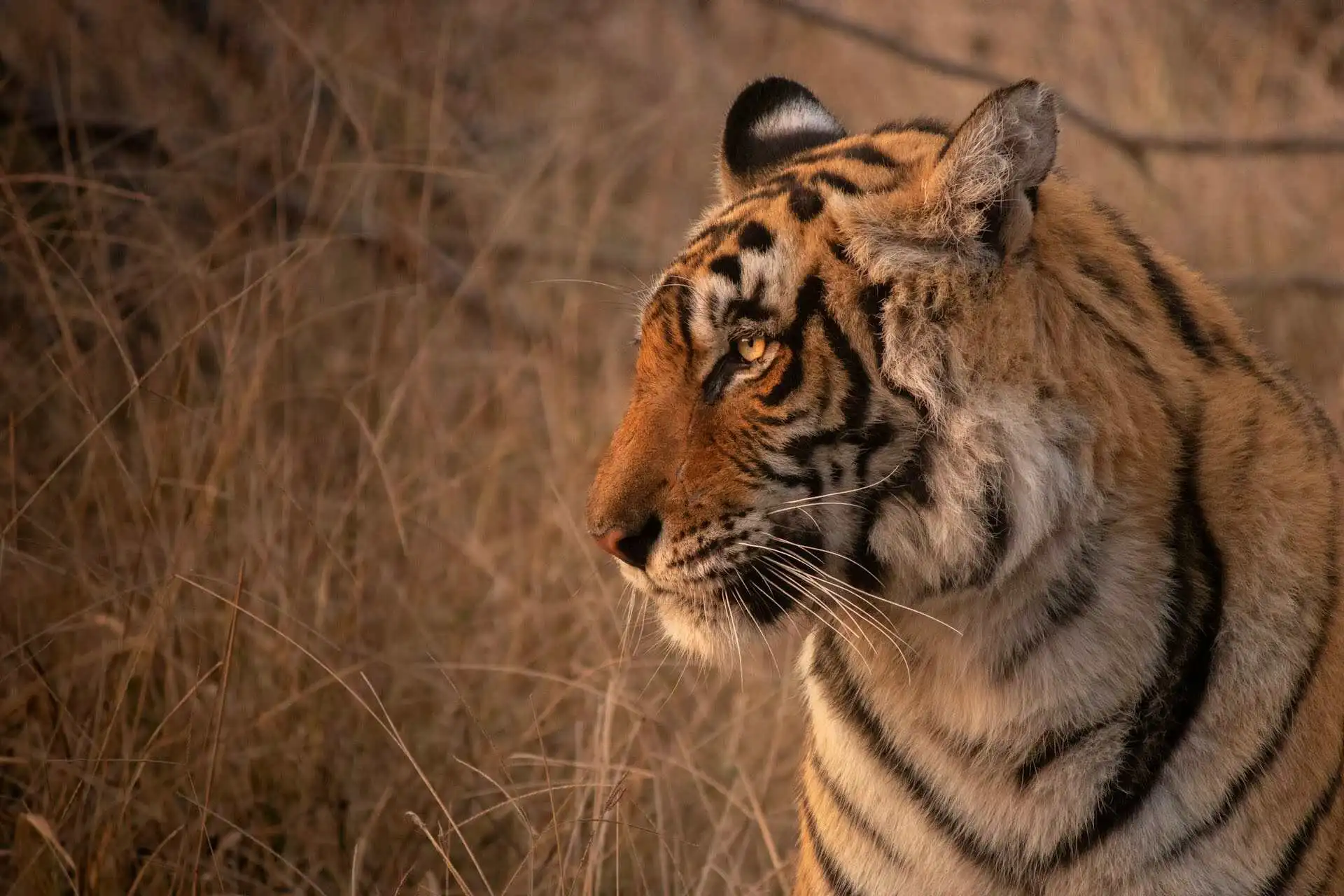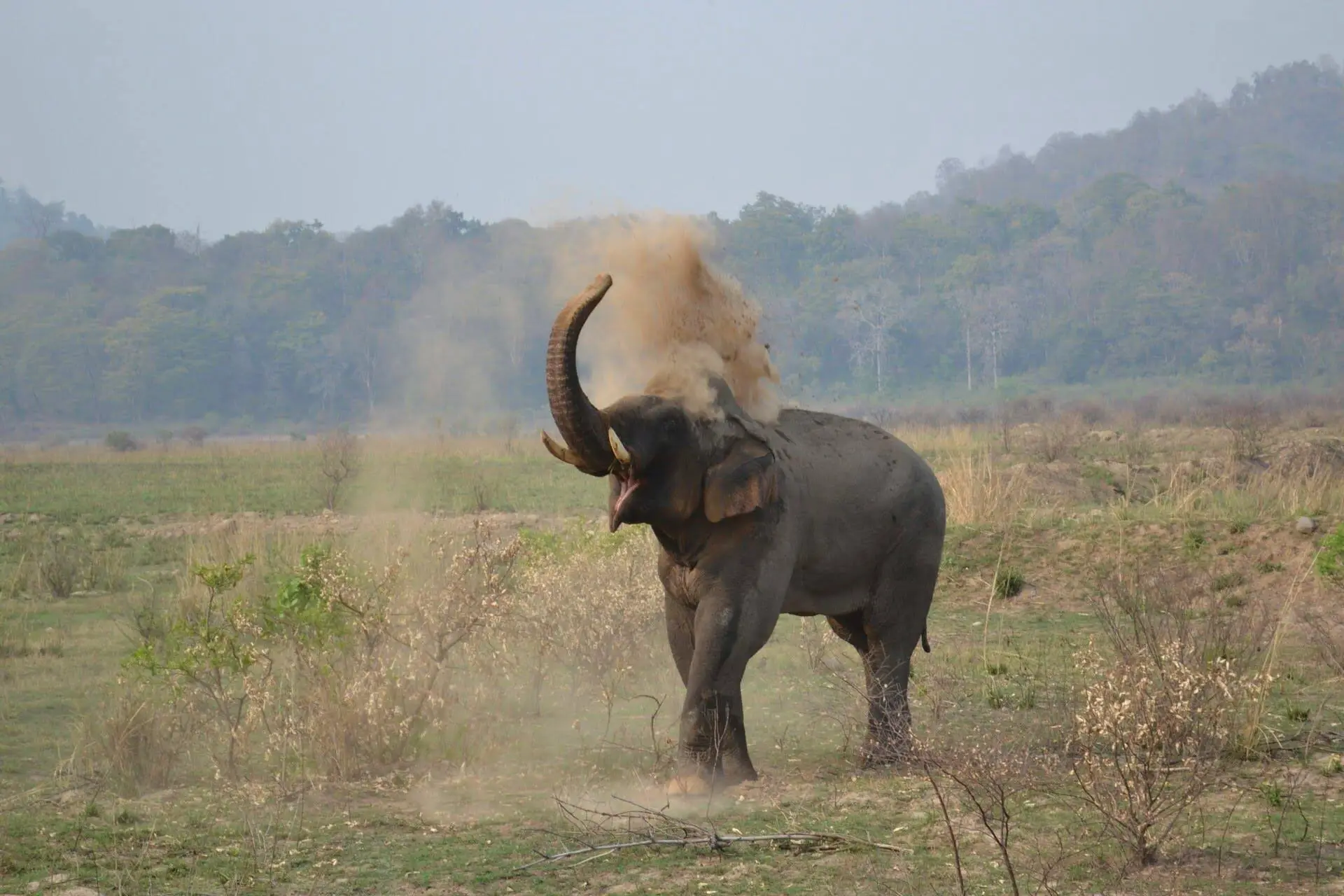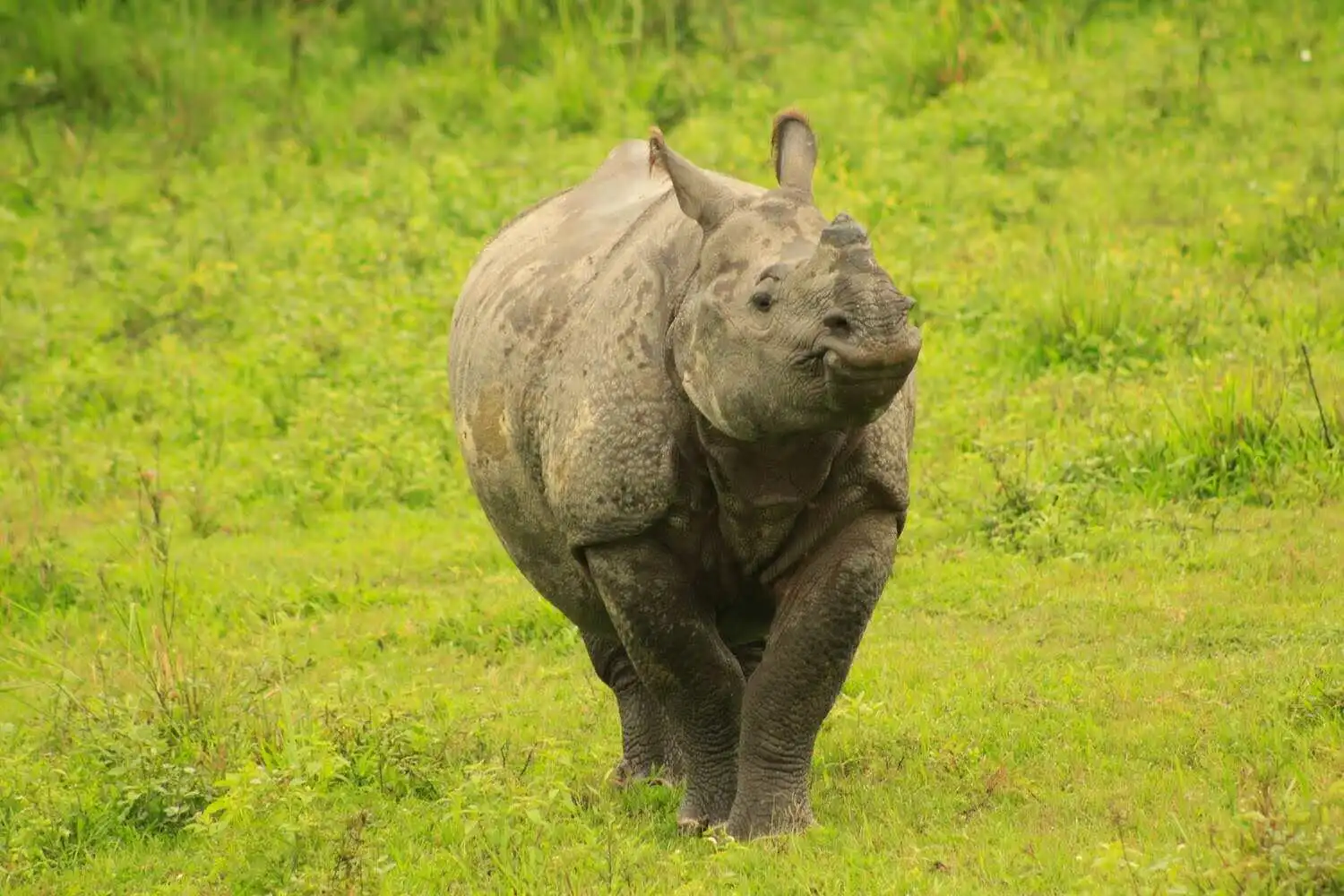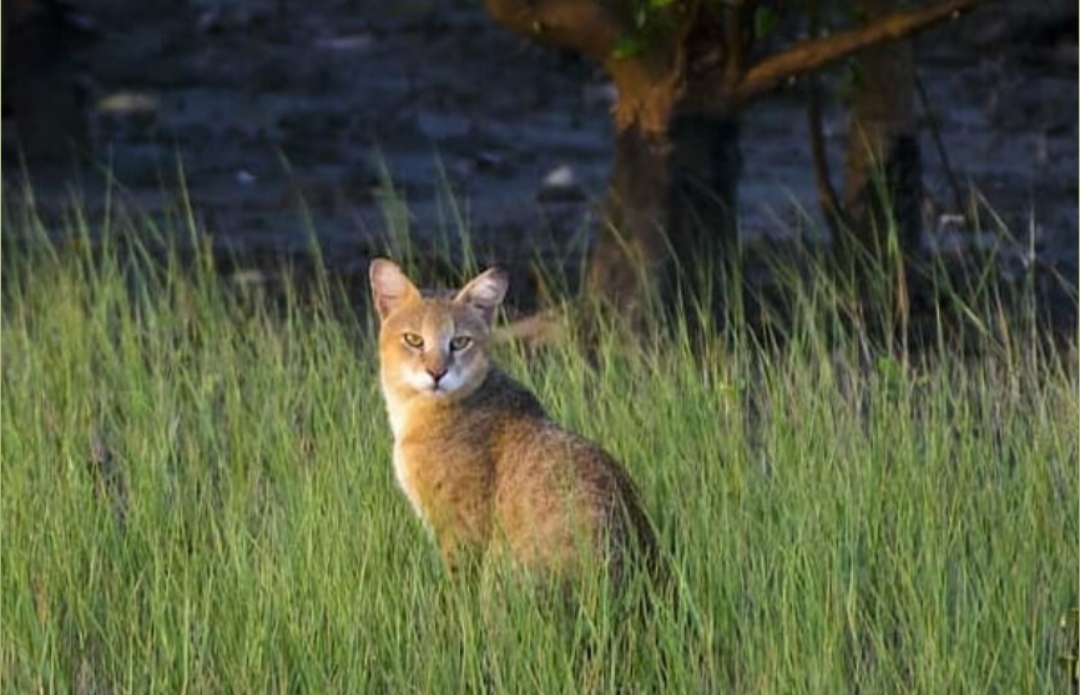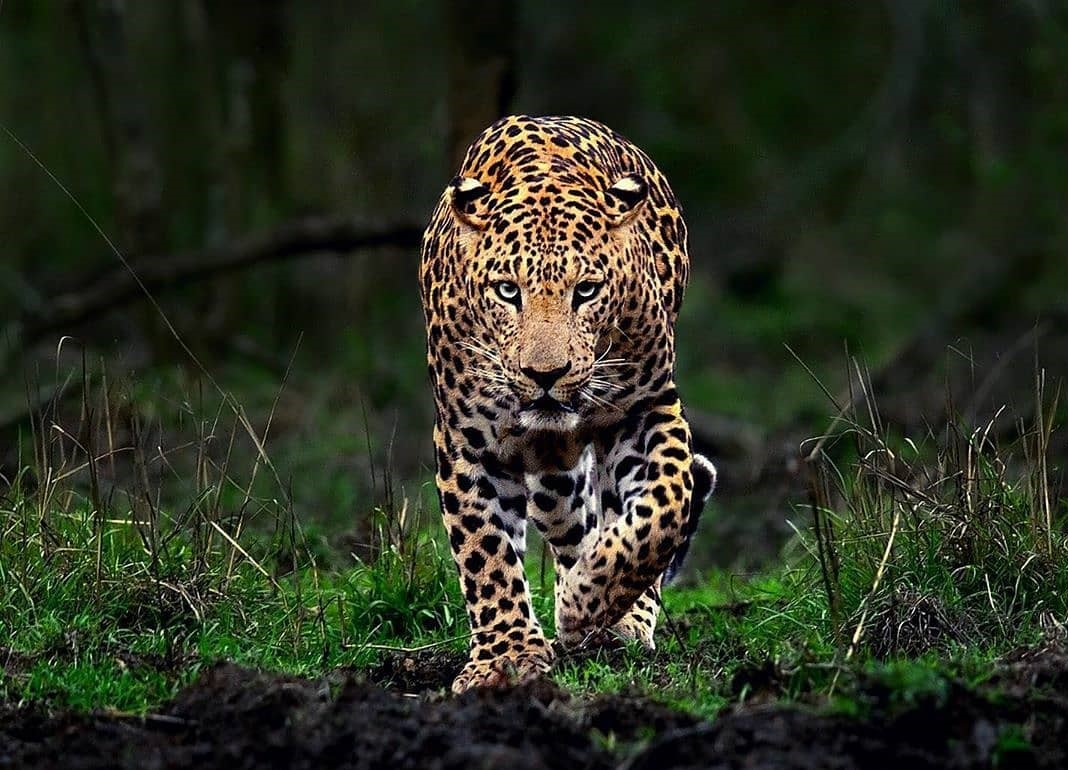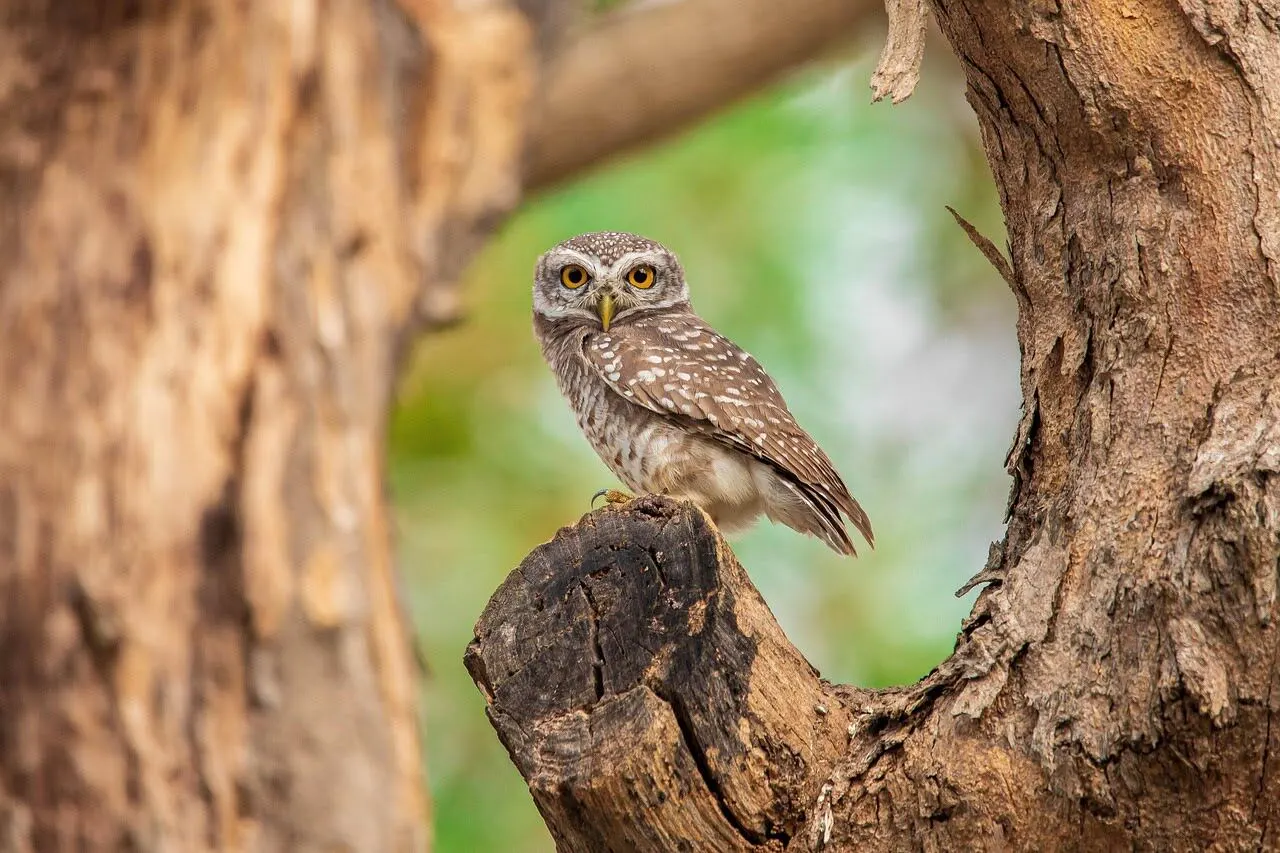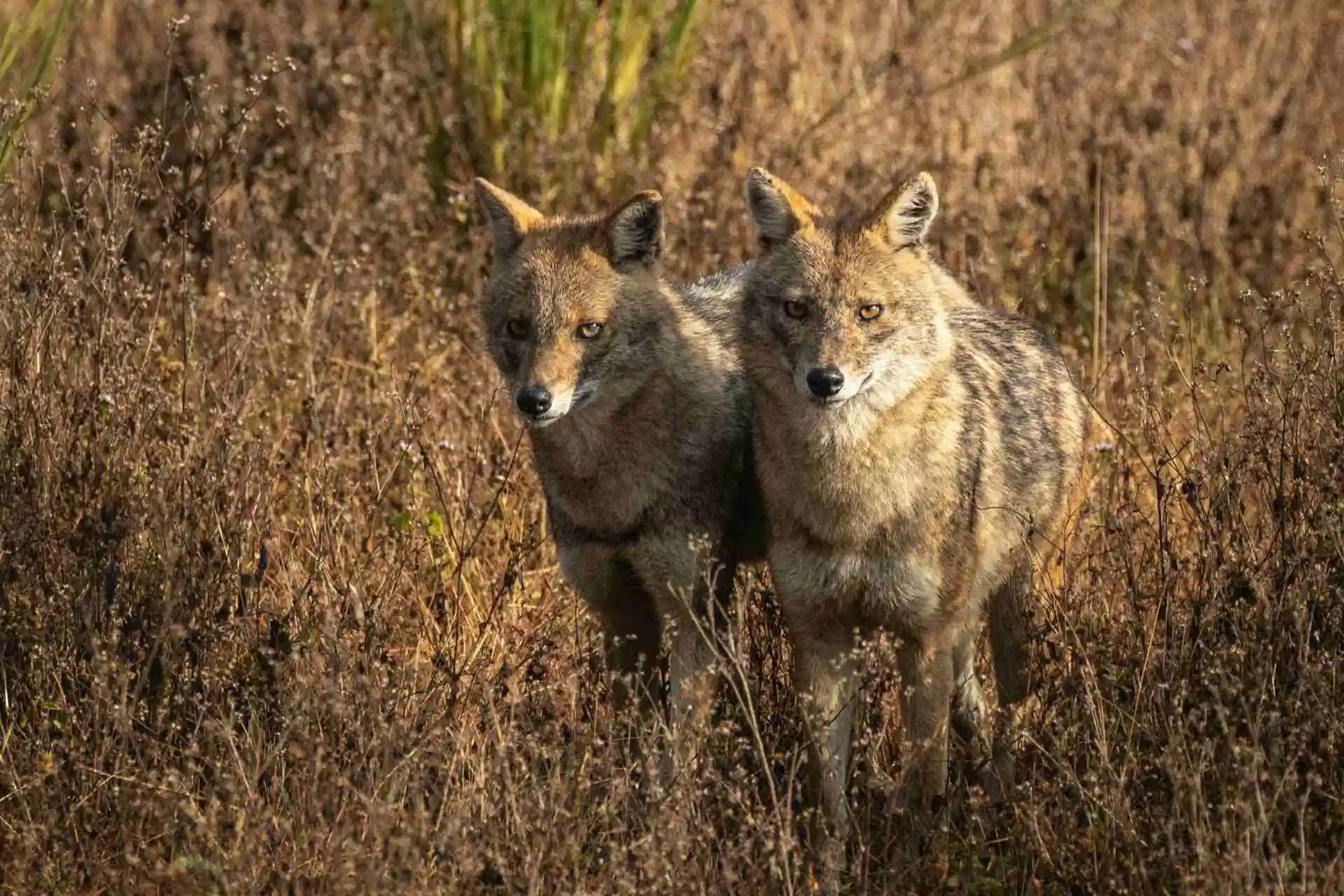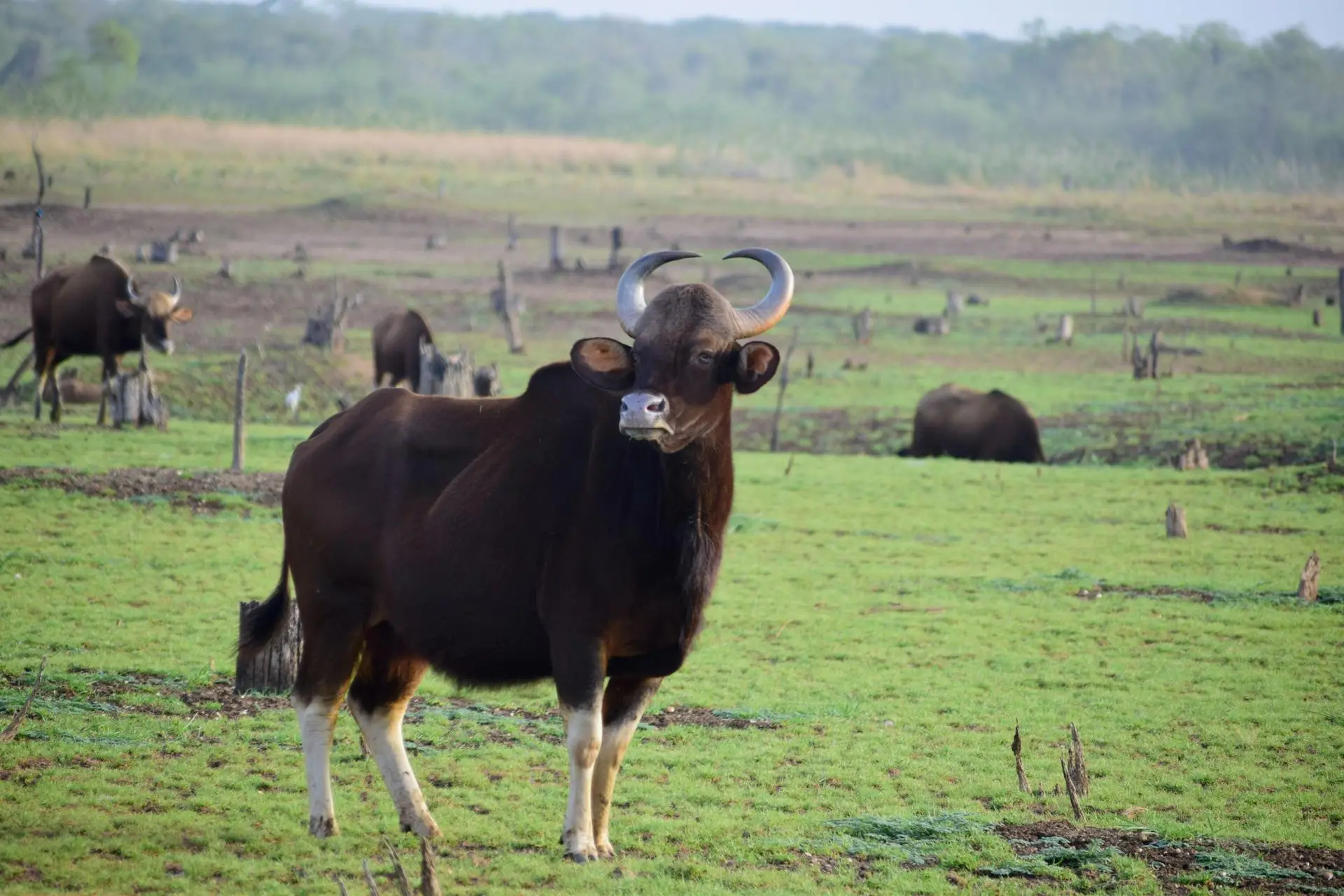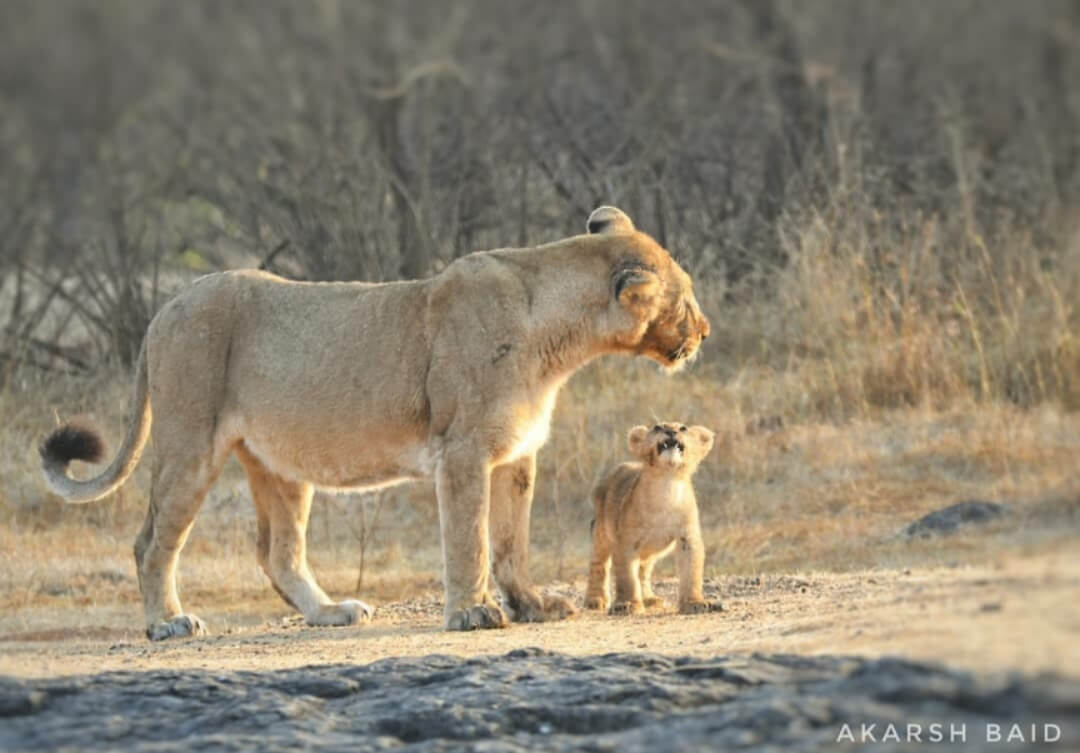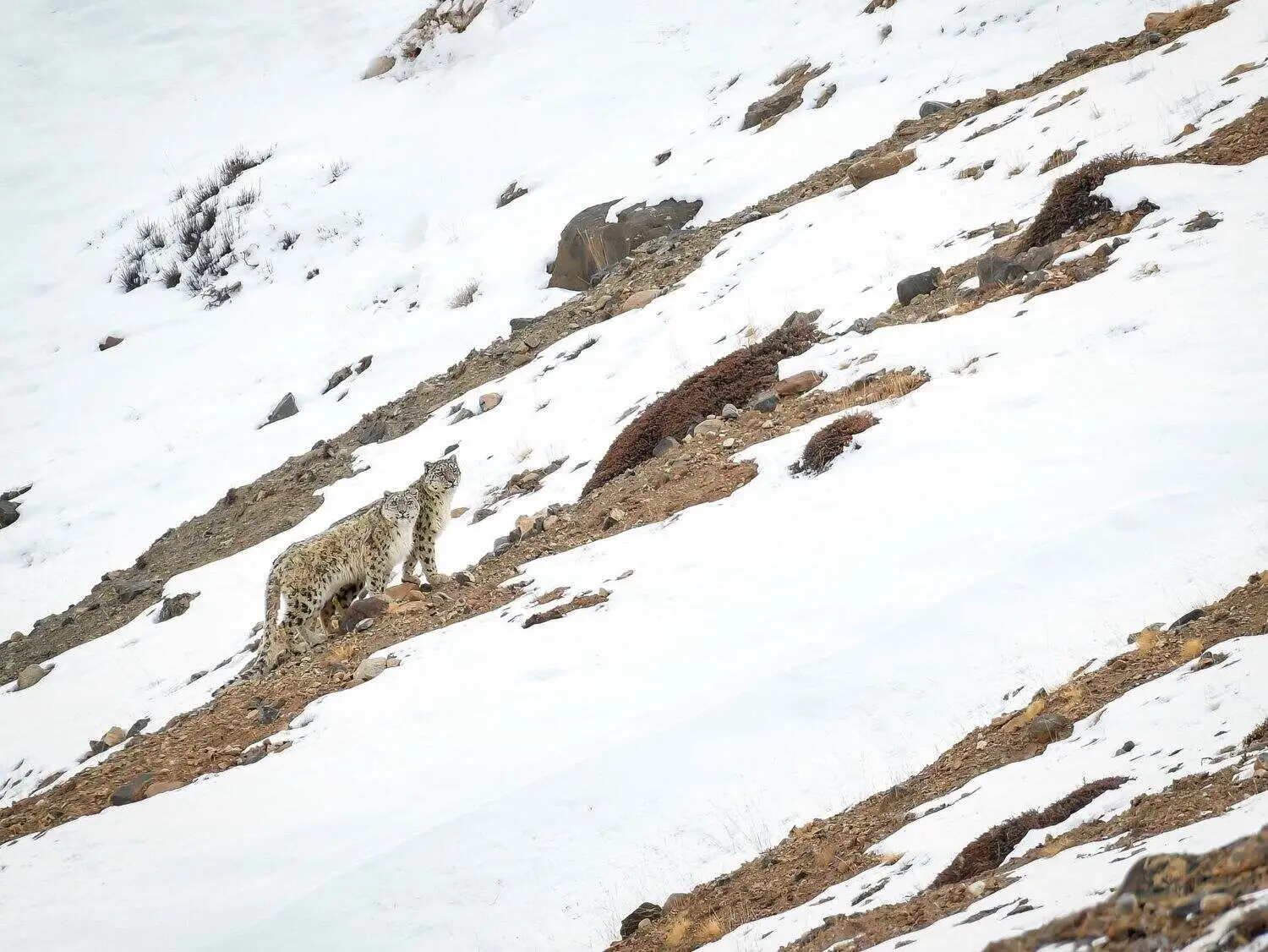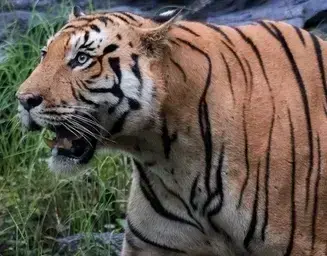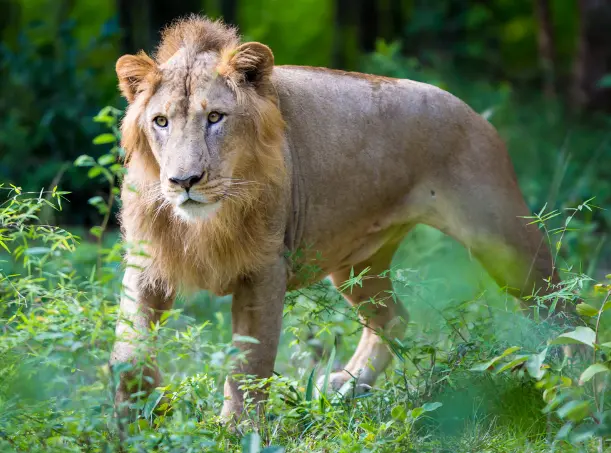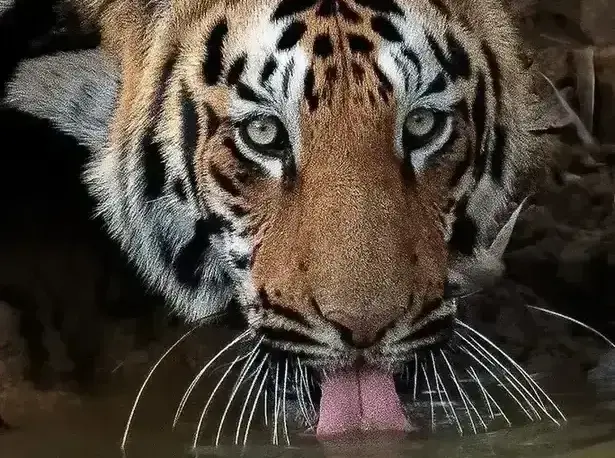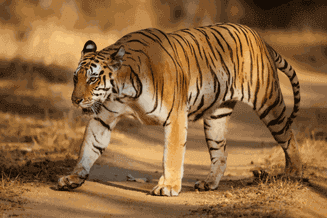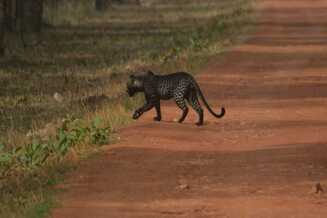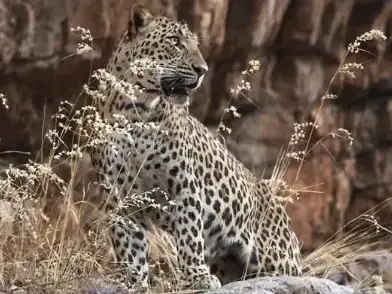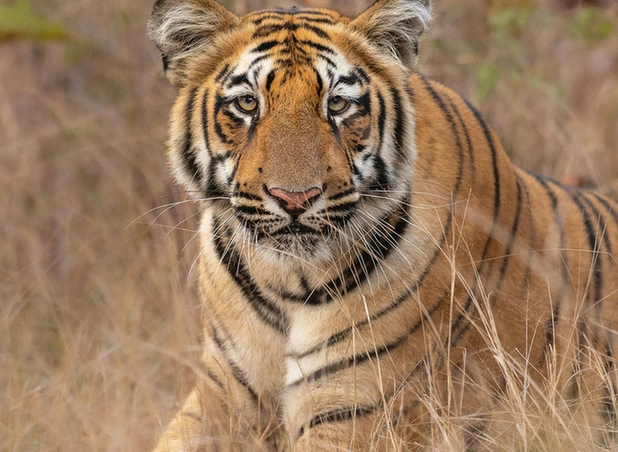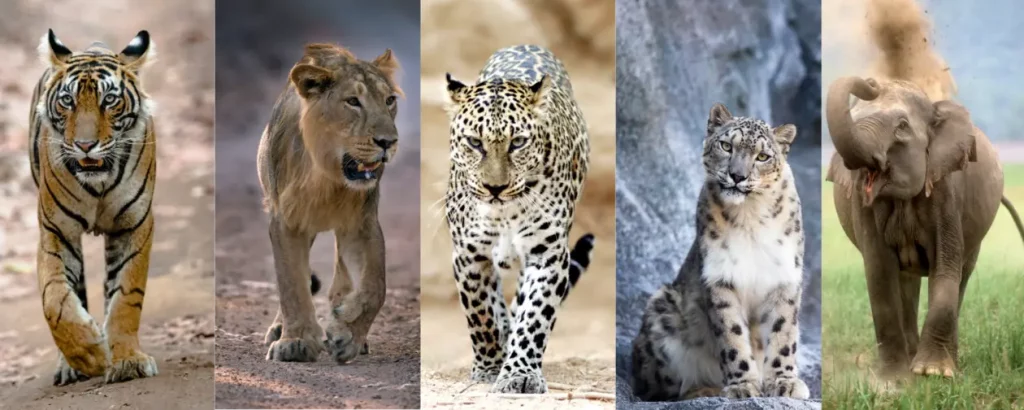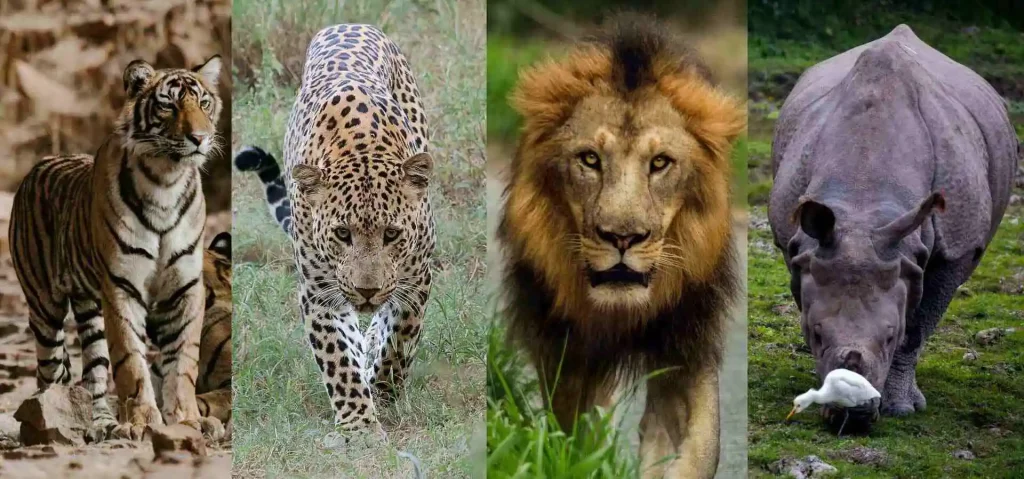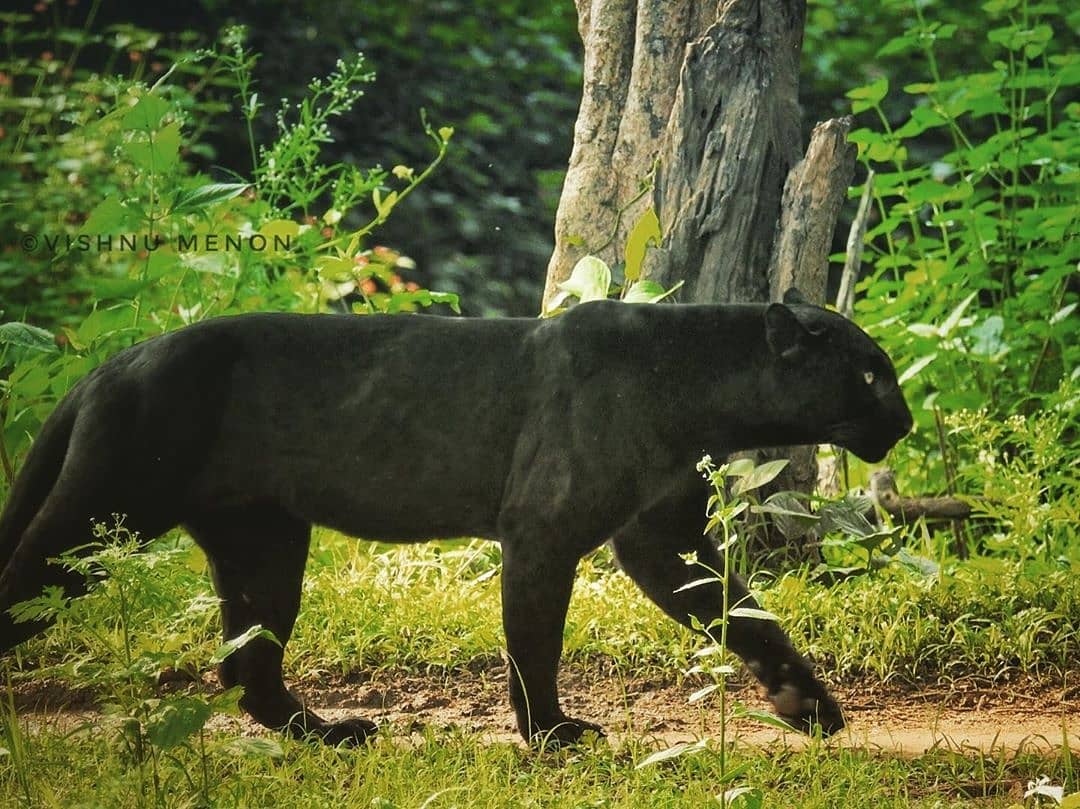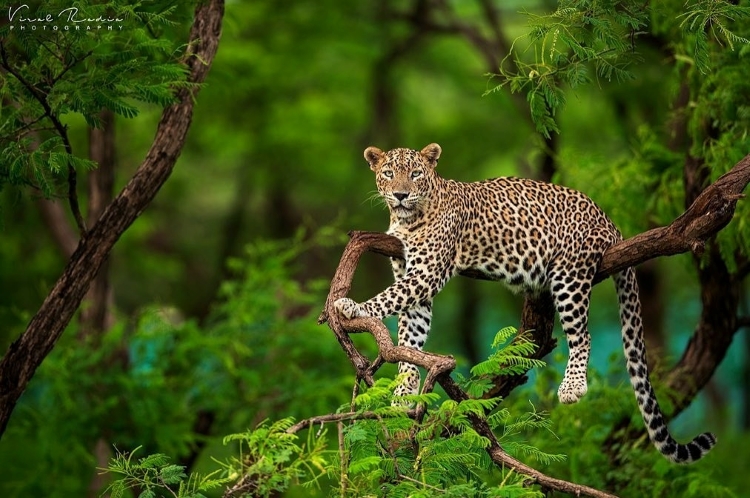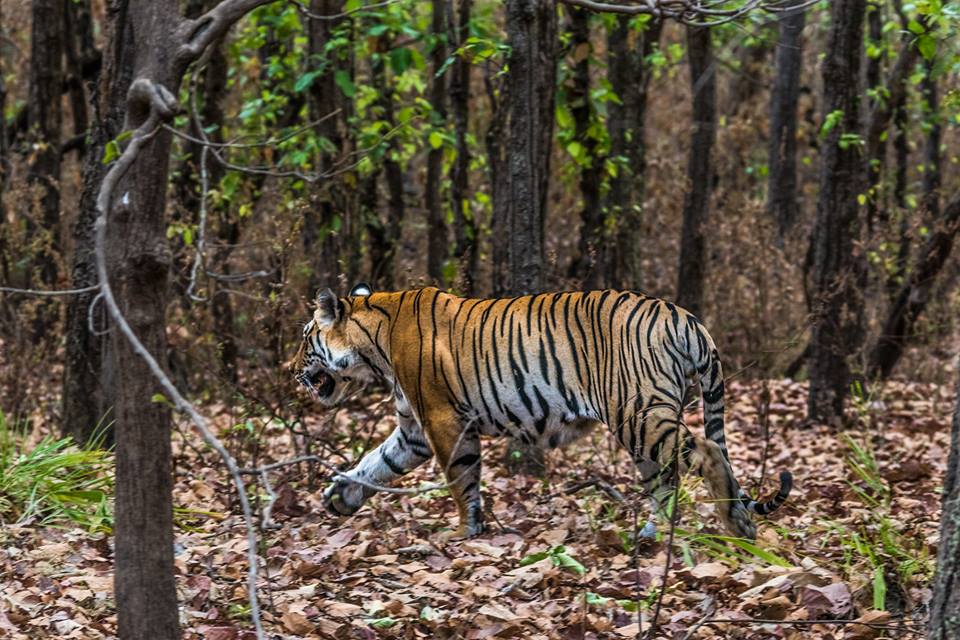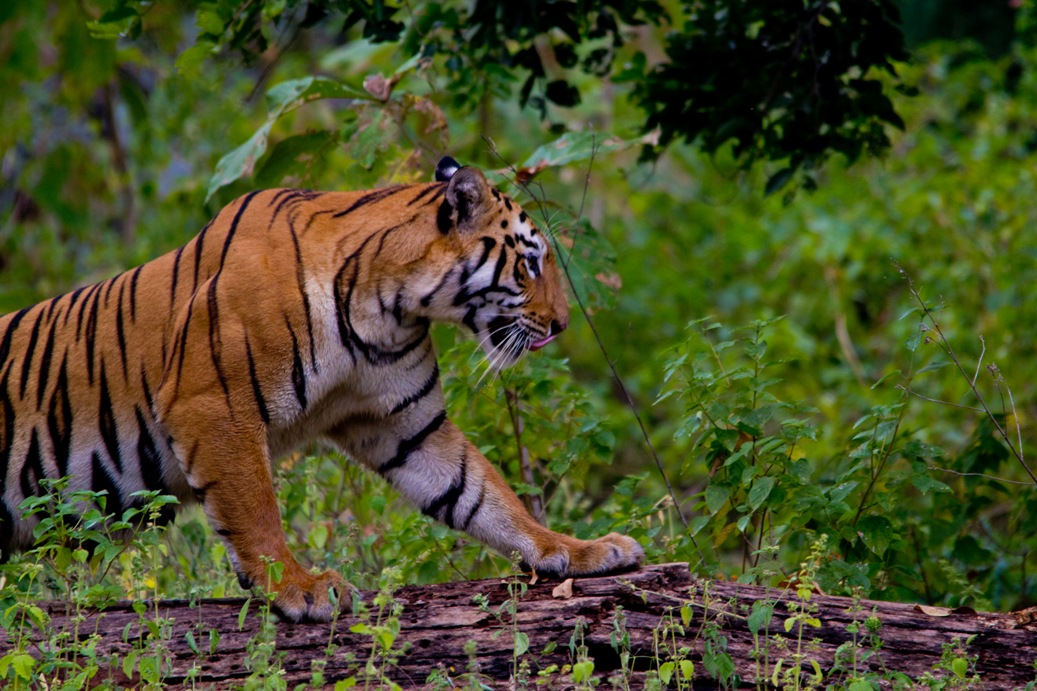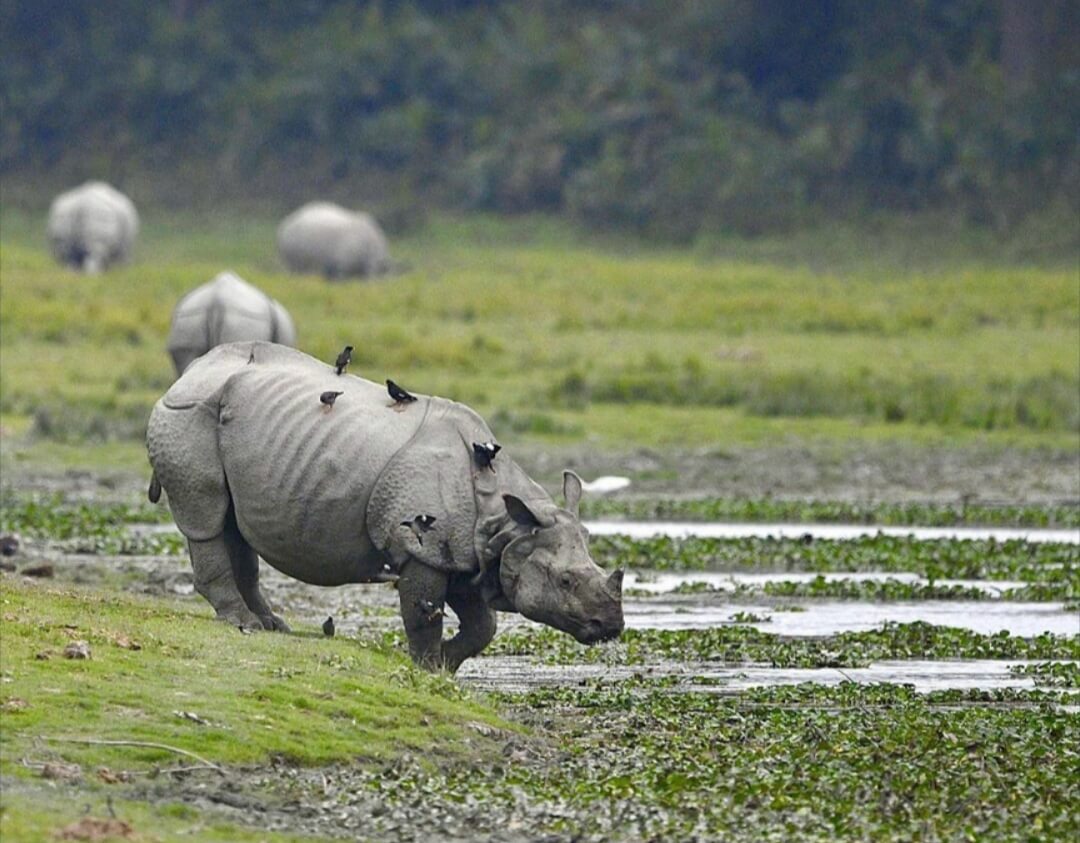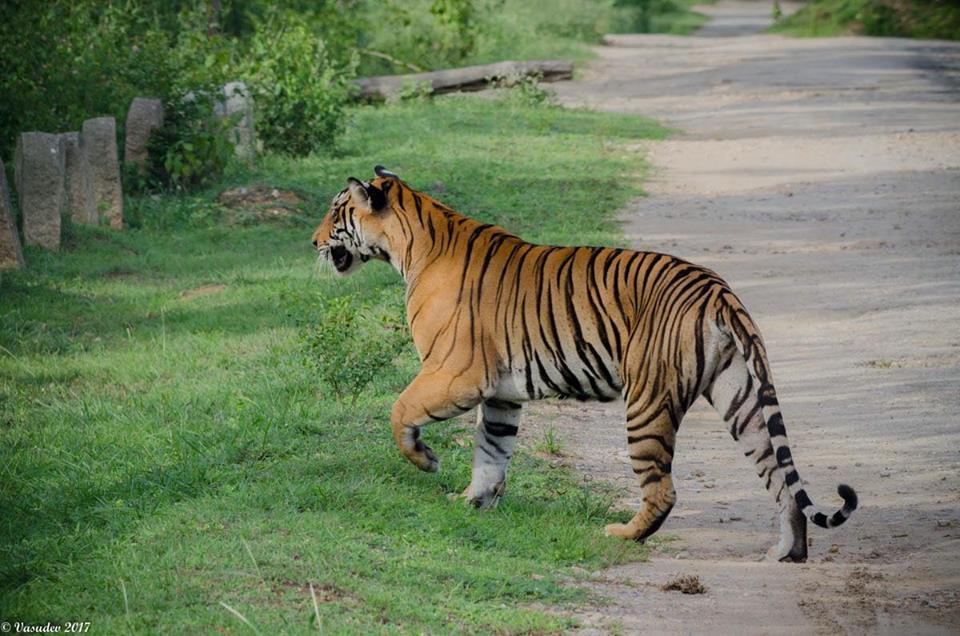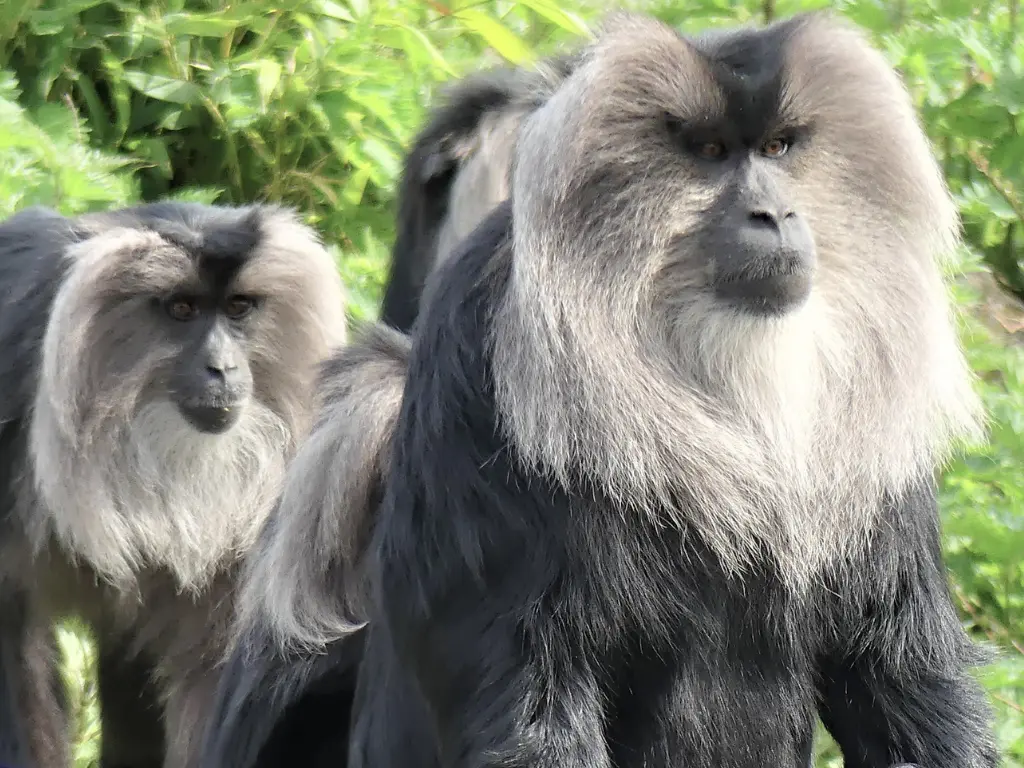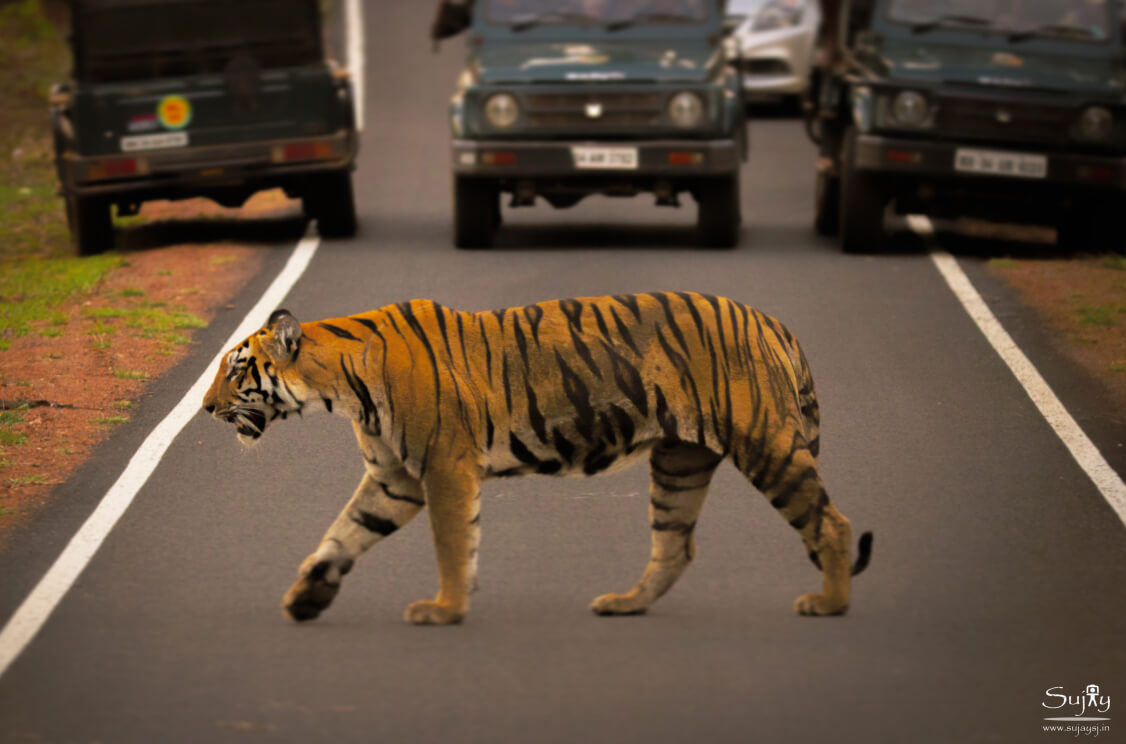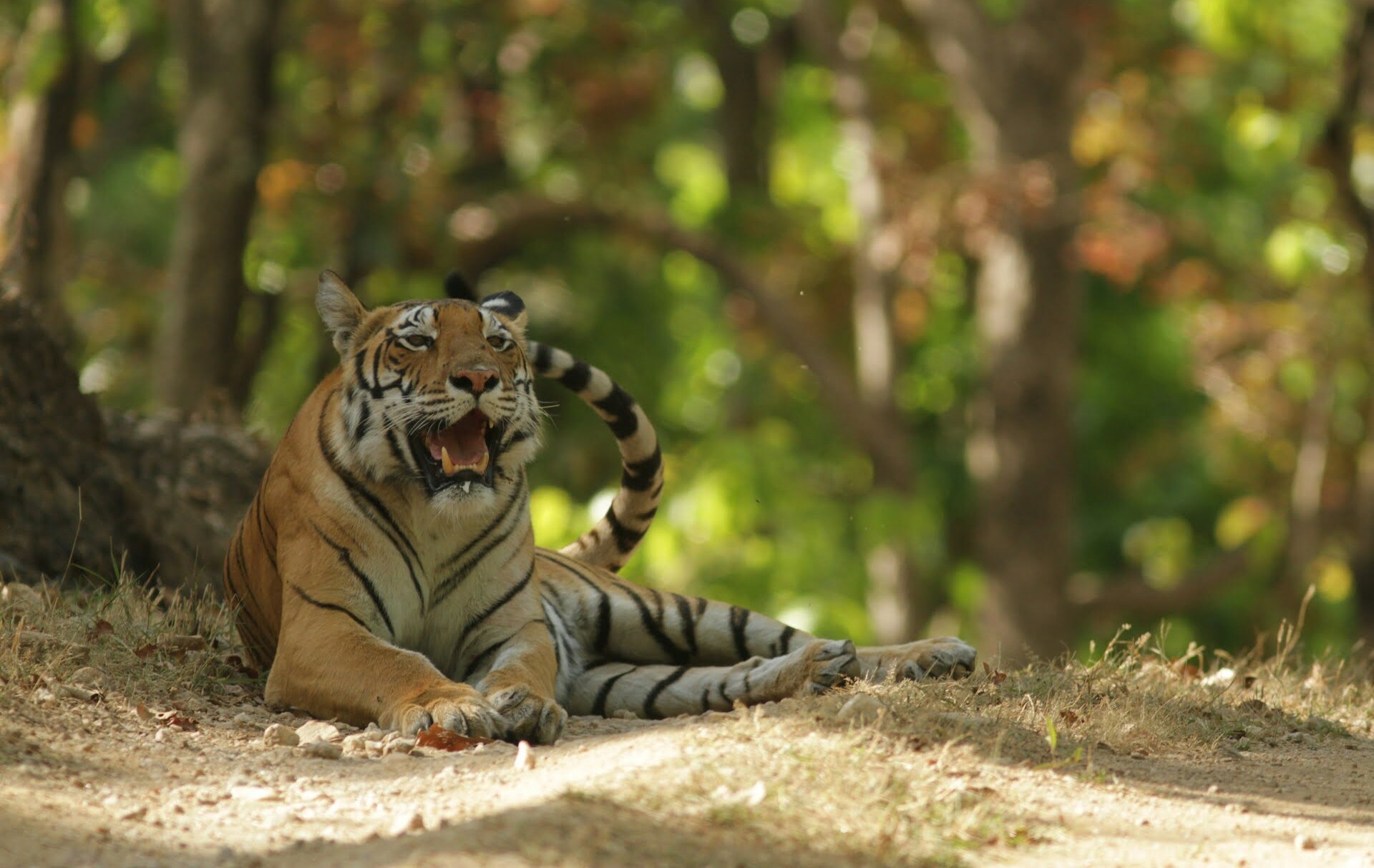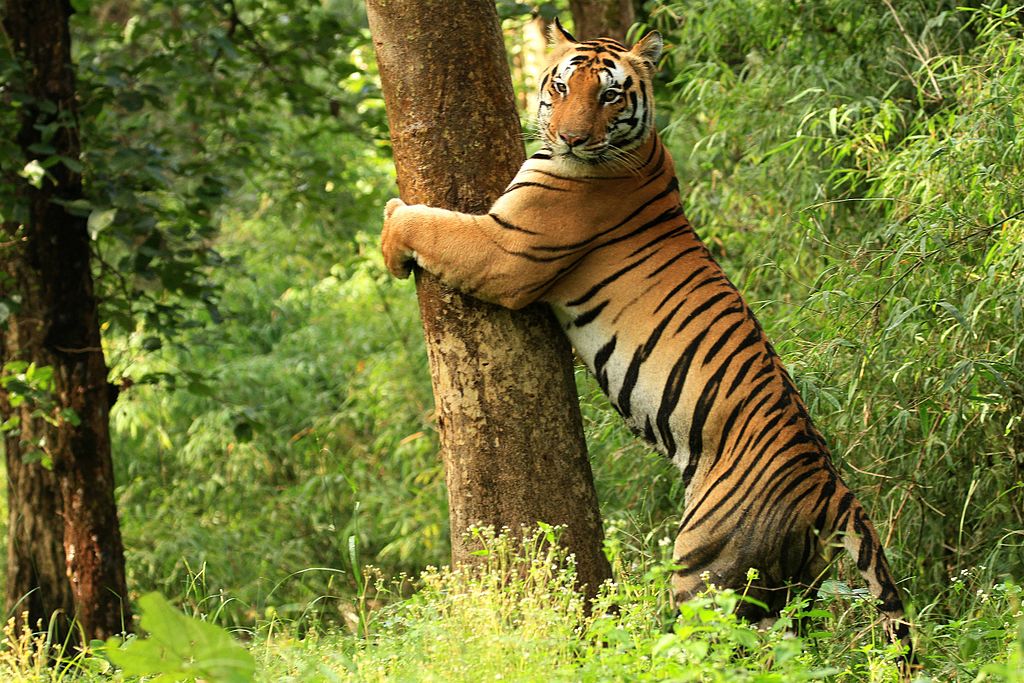The Royal Bengal Tiger – Surprising Facts Video
The Royal Bengal Tiger of India
Royal Bengal Tiger, is the largest, fiercest, and most powerful member of the Big Cat family in India.
If you want to understand How Tigers look like? What do they eat? How powerful they are? and Where to find them? then keep reading to find the details.
Royal Bengal Tigers are also known as Indian Tiger and Bengal Tiger. They constitute a large population of tiger families in the world. The Bengal tiger is the National animal of India and is found mostly in India, China, Bhutan, Bangladesh, and Burma.
The biological name of this Big Cat is Panthera Tigris, which comes under the Felidae family under the Mammalia category.
Royal Bengal Tiger Classification
| Family | Felidae |
| Sub-Family | Pantherinae |
| Genera | Panthera Tigris |
| Common Name | Royal Bengal Tiger / Indian Tiger |
Explore our Guide on How to Plan Tiger Safari in India
Physical Description of Royal Bengal Tiger
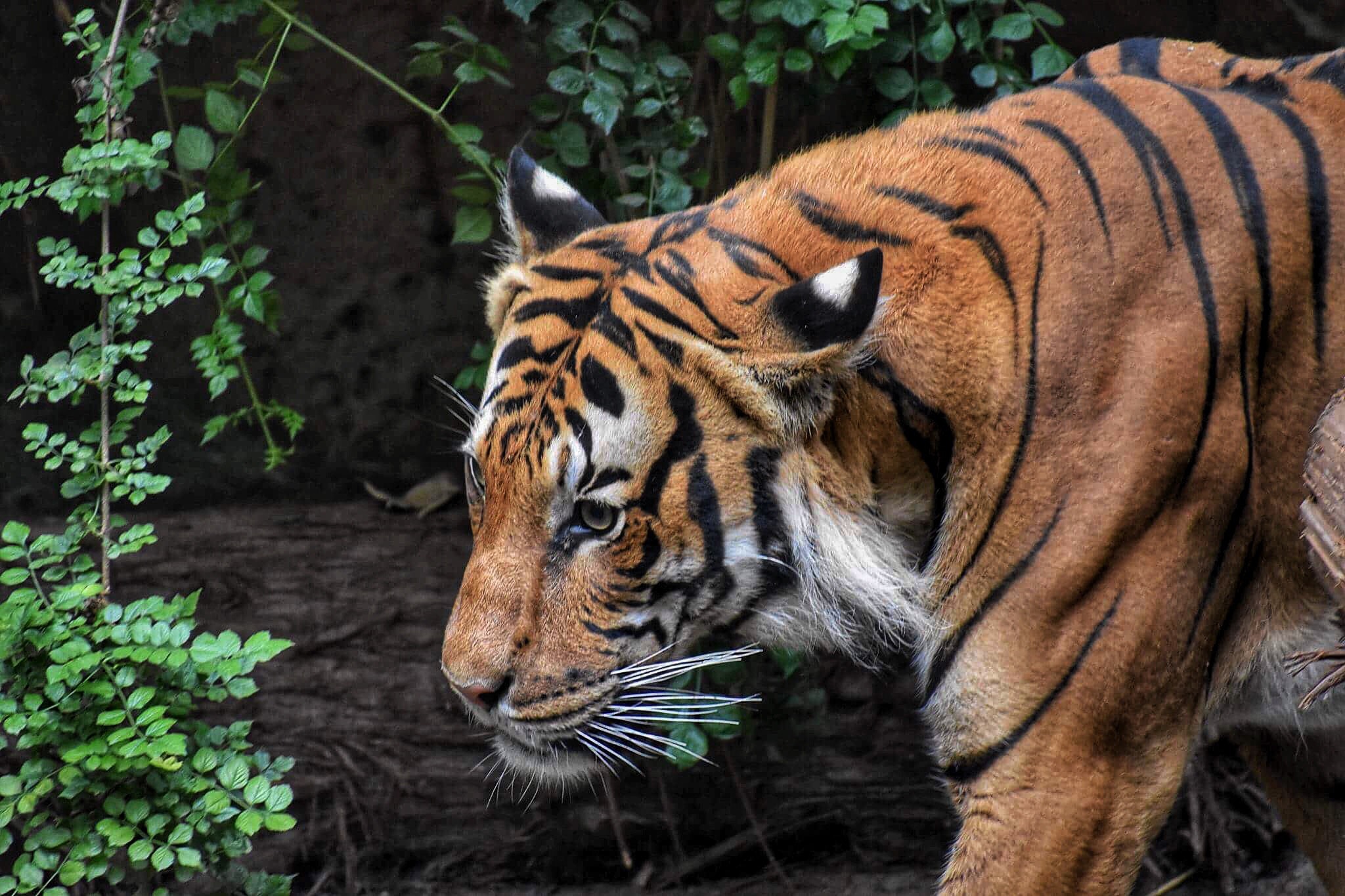
No two Bengal tigers look alike! Every Bengal Tigers has a unique stripe pattern. We may have seen many tigers in our life, but no two tigers have similar strip patterns. Every tiger on earth has a distinct striped pattern which makes them different from other tigers and makes it easy in counting them during the tiger census.
Their color ranges from yellow to light orange, with stripes from dark brown to black. Some of the Bengal Tigers are white in color, You can find a White Bengal Tiger in Bandhavgarh National Park.
The tail is orange in color with black rings. Unlike the other white tigers that have blue eyes, Bengal tigers have yellow irises.
Royal Bengal Tiger’s physical characteristics
- Life Span- They live for 10 to 15 years.
- Average Body Weight- Male Bengal Tigers weigh around 225 kg whereas Females Bengal Tigers weigh around 135 kg.
- Height- On average Male Bengal Tiger measures around 9 feet in length and a Female Bengal Tiger measures around 8 feet in length.
- Teeth- They have exceptionally strong teeth, with lengths from 7.5 to 10 cm.
- Tail- Their tail length is between 33 to 43 inches long.
Read about Bengal tiger and Siberian tiger
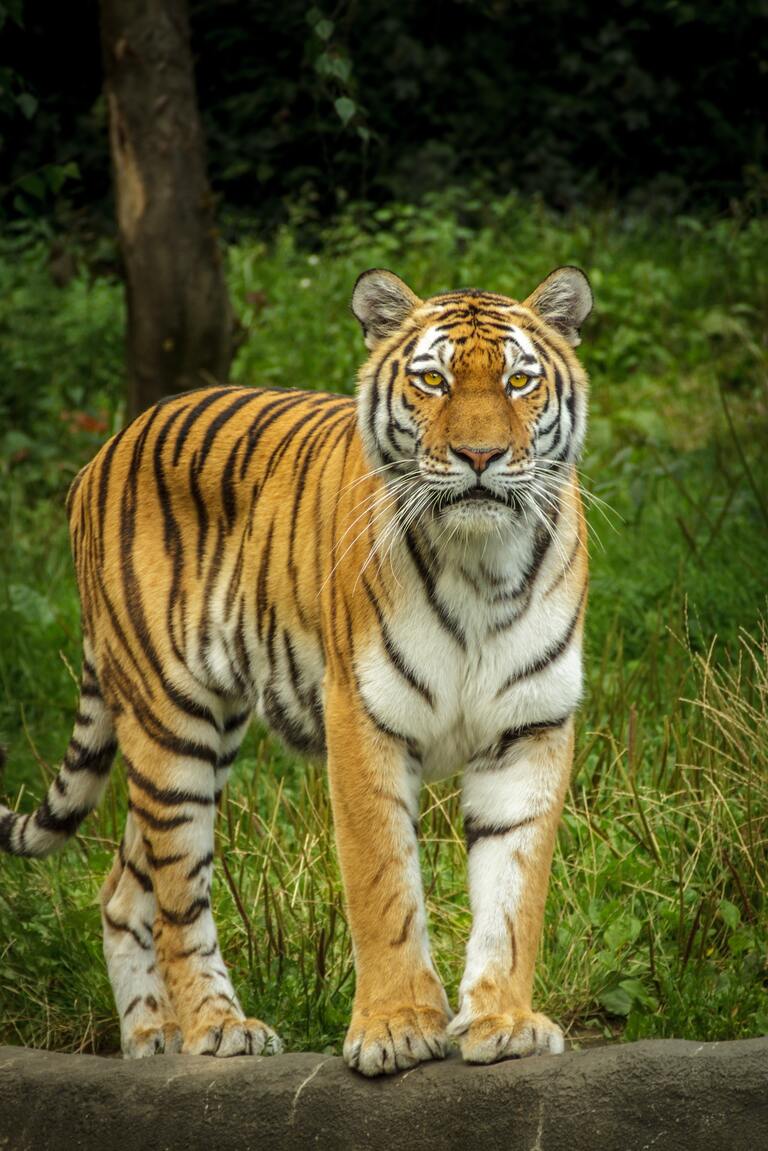
What do Bengal Tigers eat?
So what is Bengal Tiger’s diet? As we all know the basic nature of tigers is Carnivores, They mainly survive on mammals and animals like Deer, Antelope, Wild Boar, Guars, etc.
Tigers can eat up to 40 kg of meat in one go. They have expertise in hunting and They are born killers. They apply a strategy to catch the prey and take the life out of them instantly.
Tigers mostly hunt during nighttime. They are very dedicated to their prey; Royal Bengal Tigers can climb trees for their prey even though they are not good climbers of the tree. They are very powerful and can drag a ton of weighted bison by themselves.
When a tiger prowls, prey animals like deer and langurs sound alarm calls to warn others of the lurking predator. These wildlife warning systems help animals survive in the wild.
Read more about Hunting Techniques of Bengal Tiger.
Pouplar Tiger Safari Packages in India
The behavior of the Royal Bengal Tiger
Being fierce in nature, Royal Bengal Tigers are not much friendly in nature and live a solitary life, except in winter when they can be seen in a group of 3 or 4.
Bengal tigers are fast runners and good swimmers.
Tigers attack their prey in stealth mode.
They are usually spotted in swamps, mangroves, and grasslands, especially in India’s protected reserves. Many of these habitats are part of India’s National Parks, which play a crucial role in tiger conservation.
Generally, they do not wait for a particular season for mating but during winter mating rate is high.
Royal Bengal Tiger delivers a litter of 4-5 cubs and their gestation period is of 3 months.
Royal Bengal Tigers have very sharp memories, they never forget the faces. Their memory is sharper than humans and other animals. These tigers never roar, while fighting with other tigers they hiss and fluff.
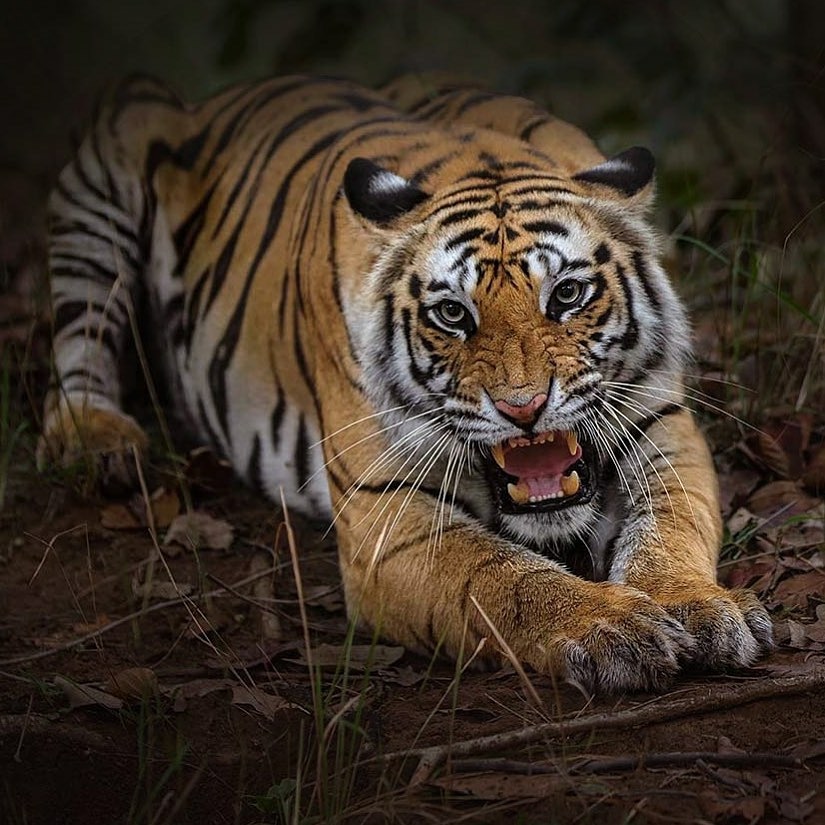
Bengal Tiger Aggression – img credits: Kushal Guttedar
Interesting Facts about Royal Bengal Tiger
Below are some of the amazing Bengal Tiger facts
-
- Royal Bengal Tiger’s saliva has an antiseptic property that is when they get injured, they lick themselves which heals the wound. This also stops the bleeding.
- They are very protective and caring for their family and litter.
- They can run-up to the speed of 60 km/h
- To mark their area of terrain, they spray the rocks and trees nearby to it with a mixture of urine and musk.
- Tigers are nocturnal. Most of the prey that a tiger approach is at night time.
- Bengal Tigers are an ambush hunters.
- Tiger’s Roar can be heard miles away.
- Bengal Tigers are good swimmers as well.
- Royal Bengal Tigers have the biggest canine of all the big cats. Bengal Tiger canine can measure up to 4 inches.
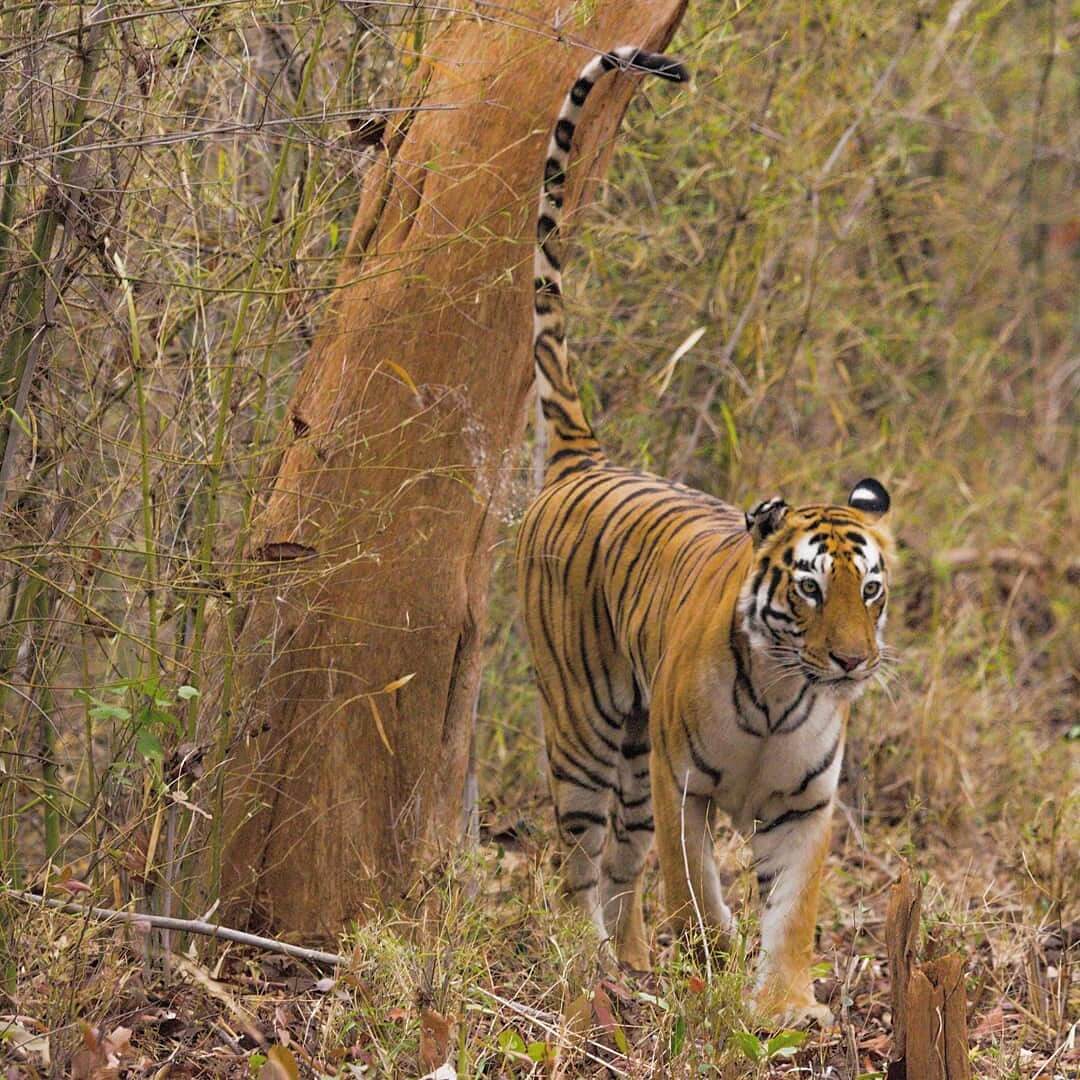
A Royal Bengal Tiger marking his territory by urine spray on a tree, img credits
Less Known Facts About Royal Bengal Tiger
-
- Bengal Tigers never roam in a group like Lions
- Every Tiger has a white spot at the back of its ears, It usually seems like eyes from the back, to an attacker.
- Both the rear legs of a Tiger are slightly longer than the front legs. Because of that, a tiger is able to jump almost 20-30 ft ahead.
- Tiger’s vision is many times better than humans and that makes them a super hunters at night time.
- A newborn Bengal Tiger cub opens their eyes in 10-12 Days and completely relies on her mother during this period. And they do not have a full vision for a few weeks sometime.
- Only 50% of tiger cubs survive and make it to adulthood.
- A tiger’s tail helps them a lot in taking sharp turns while chasing their prey.
- Only 10-15% of the chase a Royal Bengal Tiger makes, turns into a kill.
- Not only the fur, but the Tigers have stripes on their skins as well. Tigers are the only animals with completely stripped bodies.
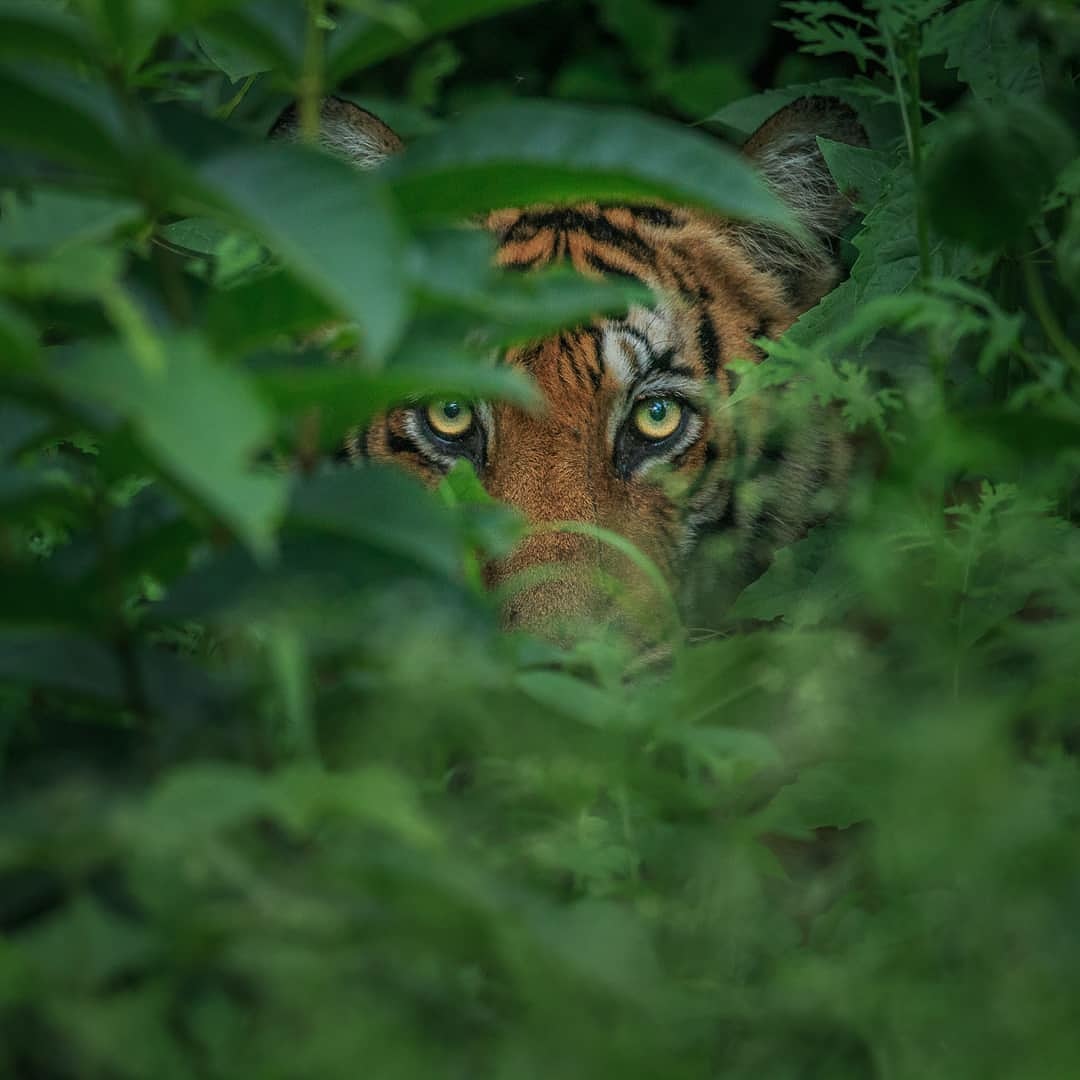
Tiger Ambush, img credits: Ramachandiran G
Royal Bengal Tiger Population in India
We can find the largest population of Royal Bengal Tigers in India. As per the latest tiger census report 2019, there are 2,967 Royal Bengal tigers in India. India has more than 75% of the total tiger population in the world.
Along with India, neighboring countries to India hold a somewhat decent population of Royal Bengal Tiger in the world.
Royal Bengal Tiger population in Bangladesh: 440
Royal Bengal Tiger population in Nepal: 235
Royal Bengal Tiger population in Bhutan: 100
Tiger Census 2018 (2019)
Knowing about the latest tiger population is always the government’s concern as they want to save this majestic animal from getting extinct.
For Tiger Census 2018, they are using more technologies to be precise about the population of Tigers left. In 2014, the population of tigers was estimated to be 2,226, which was a hike from 2010 and a cherishing moment for India.
For the 2018 census, the government has made planning which is worth Rs.10 crore, which will involve 40,000 forest guards, 26,000 camera traps, and traveling 18 states of India with a Tiger population.
This census will also include the northeast part of India, which did not get any accountability in the previous census. The results will be announced in 2019.
Tiger Census Result
The result of the later Tiger Census is out now and India has 2,967 Tigers in the country which is around 33% more than that of the 2014 census and more than double the 2006 Tiger Census.
Threats to the Royal Bengal Tiger
India has lost 97% of its Royal Bengal Tiger population in the last century. The main reason is Hunting, Poaching, Urbanization, Habitat loss, and the Illegal Wildlife Trade. This majestic big cat is now classified as an endangered species, making conservation efforts more crucial than ever.
Poaching and Illegal Tiger Hunting
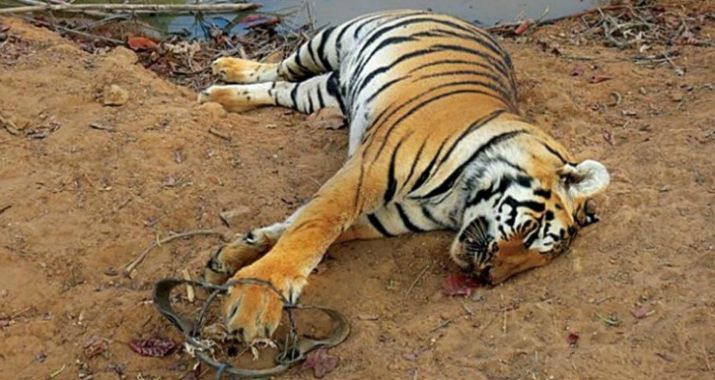
Tiger Poaching is one of the biggest threats, img credits
These majestic Royal Bengal Tigers need to be protected from getting extinct. Over the years, their numbers have decreased dramatically.
Poaching means illegally trading tiger-made products like tiger skin, tiger-made jewelry, etc. These skin and jewelry are sold for millions in the international market.
Poaching has reduced the number of tigers to just 3,000 from 1, 00,000 at the starting of the 20th century.
Threats from the Human Population
As the human population is increasing, it is becoming a threat to wildlife. As for the living, the humans cut down the trees, and the forest area gets reduced.
Much of the tiger habitat area is occupied by humans and converted into agricultural lands, dams, for making houses, etc. which exposes the Tiger. Due to this, they are found wandering alone in search of their habitats which ultimately leads to inbreeding reducing genetic diversity.
Also, we have seen many Human-Animal conflicts in which many of the Big Cats have to pay the ultimate price.
Save Tiger Initiative / Save Big Cats Initiative
In 1973, Project Tiger was launched in India with an aim to protect this endangered species. The project aims to provide the Royal Bengal tigers with their natural habitats and protect them from the hunters and getting extinct.
The government also started warning the common people about the extinction via the advertisement “Only 1411 left” as Royal Bengal tigers are the most glorifying species of our country. Celebrities like Amitabh Bachchan, and MS Dhoni joined the initiative and promoted it.
With the continuous efforts of the Government, now there are 50 Project Tiger Wildlife reserves in India, covering an area of more than 70,000 sq km.
Apart from the government, it is our duty also to Save these Endangered Big Cat species for the next generation.
Where to see Royal Bengal Tiger in India
Royal Bengal Tigers like Tropical rain forests, Marshes, and Tall grasses. A few of the National Parks and Wildlife Sanctuaries, below are some of the Bengal tiger habitats in India.
-
- Kanha National Park, Madhya Pradesh
- Bandhavgarh National Park, Madhya Pradesh
- Sunderban National Park, West Bengal
- Ranthambore Tiger Reserve, Rajasthan
- Corbett National Park, Uttaranchal
- Tadoba Andhari Tiger Reserve, Maharashtra
- Pench National Park, Maharashtra & Madhya Pradesh
Best time to See Royal Bengal Tigers
The Best time to visit any National Park is in the winter from October to March. But, if you want to visit to spot a Royal Bengal Tiger, the best time is from April to June, as during this time the summer approaches and the Tigers can be seen near any water body Pond or Lake. However, the best time may differ from park to park based on the landscapes and climatic conditions in that park.
How to Track a Tiger in Wild
Want to know how experts track tigers in the wild? Pugmarks and alarm calls are key clues that reveal a tiger’s presence. From understanding paw prints to decoding the warning calls of deer and monkeys, these signs help wildlife enthusiasts and guides follow a tiger’s trail. Learn more in our detailed guide:
Bengal Tiger Facts
